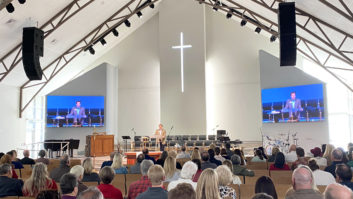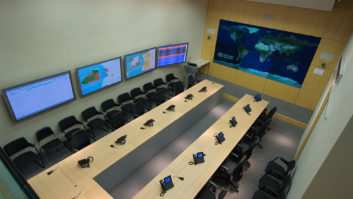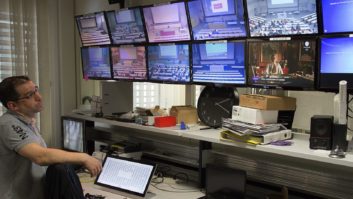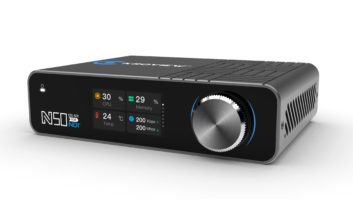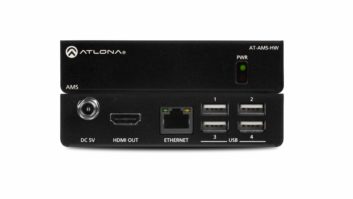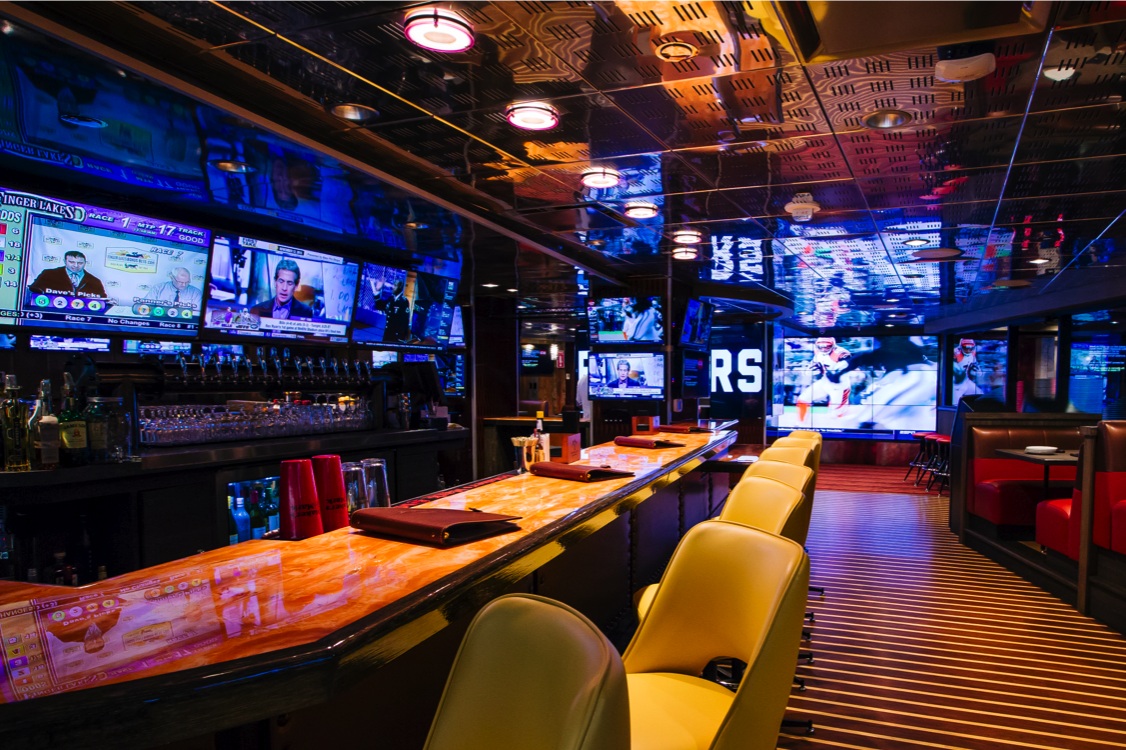
The abundance of networked systems at InfoComm 2016 suggested that AV over IP is finally coming of age – but how far along are we really in this hugely significant transition? David Davies finds out.
AV over IP takes centre stage’ at InfoComm, declared Installation in June 2016 at the close of this year’s InfoComm exhibition in Las Vegas. AV over IP products from Atlona, AptoVision, AMX and Crestron were among those highlighted – but they were just the tip of the iceberg of the next-generation solutions unveiled.
The flexibility and scalability of networked AV systems are among the factors to be recommending them above traditional point-to-point configurations. Control rooms, conference centres and larger educational facilities are among the applications where the transition has arguably been most marked to date.
But in an area where there has been some degree of hype exceeding expectation, it is essential to take a closer look and find out how quite far along we are to completing this historic transition. Installation therefore spoke to a number of leading vendors, discovering in the process that while significant progress has been made, there is still much work to be done to ensure that all customers can feel confident about making the jump.
Progressive vs conservative
With its NetworkHD 100-Series and 200-Series lines, WyreStorm offers an extensive range of AV over IP controllers, encoders and decoders using H.264 and JPEG2000 technologies. The company’s EMEA general manager, Adrian Ickeringill, is therefore well placed to offer a summary of the current state of play.
“The market can be said to be split into two – progressive and conservative – both of which have their own innate challenges to overcome when introducing new technologies, such as IP,” he says. “Progressive early adopters and providers of high-end solutions are always looking to the future, to offer the unique solutions they feel are ahead of the game, and thus are have been more open to IP-based AV distribution as an alternative to ‘accepted’ transmission technologies, such as HDBaseT.
“On the flipside, the conservative side of the market resists a technology like AV over IP until it has had a chance to ‘bed in’, having already invested time and energy getting competent with the last new technology – in this case, HDBaseT – and has grown accustomed to its installation and stability, as well as the numerous matrix/extender/presentation switcher options available for HDBaseT solutions, which have become standard in recent years.”
While this overview captures the fundamental split in the market, opinions vary on what share is to be found in each camp. “It is moving fast,” says Nicolas Jaud, product marketing manager, ATEN UK. “With the politics of all-fibre networks everywhere and high-bandwidth networks, it is now possible to send video at reasonable quality over IP.”
Andy Whitehead, general manager, SVSi by Harman, contends that “we are still on the front end [of the transition] with most installations still proprietary non-IP-based. Some functions – like control – have mostly evolved to IP-based technology, but others – like non-blocking video matrix switches and presentation switchers – are mostly proprietary analogue or digital.”
Meanwhile, Justin Kennington – strategic and technical marketing director at AptoVision – points up the difference between the progress of the ‘A’ and ‘V’ in ‘networked AV’. “The transition is starting to gain steam,” he says. “At InfoComm this year every major manufacturer – even some new to the video game – was showing off some type of video over IP solution. The transition for pure audio products seems nearly complete, driven by Dante. The transition for video-based products is really building, but still a little bit ‘wild west’ with no standard approach yet chosen.”
Factors driving change
But while assessments of its current status might vary, there is a general consensus on why the transition is occurring – and in particular why it is happening now. Primarily these include the ability of IP-based designs to assist flexibility in terms of routing video, and scalability with regard to expanding and enhancing systems as requirements change. The affordability of IP switches has been a vital enabler here, of course, but so too has been improved network bandwidth and more advanced compression technologies.
Jamie Adkin, strategic sales manager of Adder Technology, comments: “The obvious benefits of moving to IP are increased flexibility and scalability – that is, the ability to quickly, easily and cost-effectively scale infrastructure in line with business growth. This is particularly true for large projects where a fixed install would have been incredibly complex. Here, IP and its standardised methodology makes it easy for it to be rolled out over large sites.”
Kennington puts the change in the context of a trajectory that has seen similar developments taking place in other areas of communications. “IP switching is a lot cheaper than circuit switching (what you find in matrix switchers),” he says. “This transition has happened in every single communications industry so far – telco, cable TV, etc. For pro AV, the application requirements demanded more than the IP networks could provide until now. Pro AV frequently demands zero latency and zero artefacts. This translates into a demand for a lot of bandwidth. Finally, 10Gb networks are priced realistically (and getting cheaper by the day), and these networks have the bandwidth necessary to transmit uncompressed video without latency – a job that used to be the domain of HDBaseT can now be usurped by Ethernet.”
For WyreStorm’s Ickeringill, one significant factor would be “the advancement of the different video compression technologies to a level of quality and reliability suitable for commercial applications.” But future expansion in terms of adding new video sources and rooms – and the attendant installation and maintenance – should also be factored into the mix.
“Markets such as bars and restaurants, shops and shopping malls, education, corporate, control rooms, courtrooms and transport – in short any medium to large multi-source to multi-screen commercial application – all benefit from the ability to add screens and integrate additional sources as required, and negate the need for a fixed matrix solution for significant cost savings on projects,” he says.
“Further cost savings can be found [at the installation stage in terms of] reduced time and hardware, with reduced potential points of failure within a system that can impact on a whole project and easier identification and resolution of failure compared to standalone matrix systems – removing the need to swap a full matrix or spend a lengthy amount of time identifying problems on site.”
www.adder.com
www.aptovision.com
www.aten.com/gb/en
www.svsiav.com
www.wyrestorm.com
